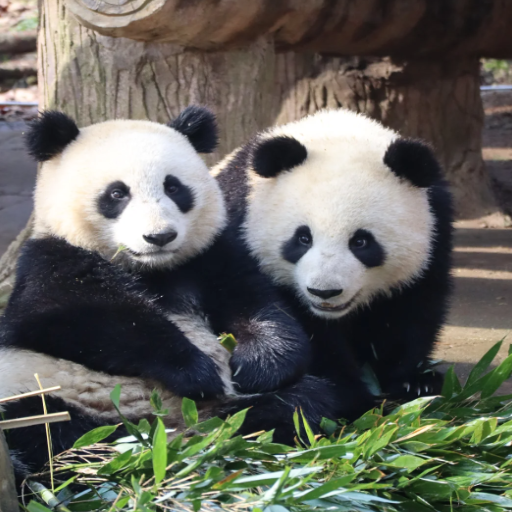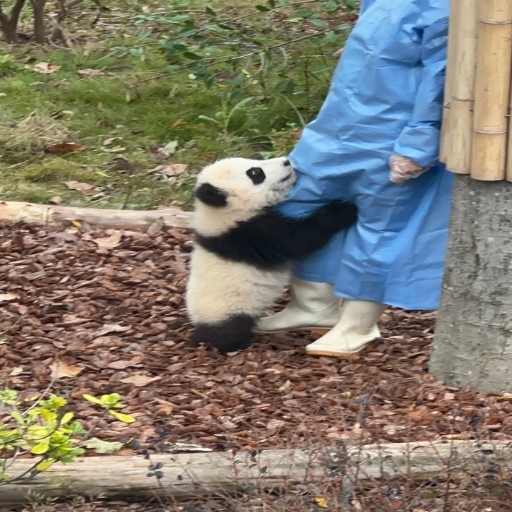The Panda Sanctuary, located in the center of Chengdu, China, is an internationally accredited breeding center for giant pandas, one of the world’s most adored yet endangered creatures. In this blog4, I will guide you through the Sanctuary’s Gentle Giant conservation program and its breeding programs, explain the essence of conservation, and underscore the institution’s role as a proponent of biodiversity education. Also, I will summarize the visitor’s experience to show how this remarkable place inspires us to value ecological altruism. If you are interested in earth’s wildlife or want to learn about giant pandas, this overview will teach you about the Chengdu Panda Sanctuary.
How Can I Get to the Chengdu Panda Base?

How Can I Get to the Chengdu Panda Base
The Chengdu Panda Base is located 10 kilometers from the city center, making it accessible to visitors. Ride-hailing services or taxis are readily available, with an average time of 30 minutes, but may be impacted by traffic. In addition, public transport such as the subway or bus is also available, with many routes traveling to the base and adjacent stops. The most efficient method would be joining a guided tour, which includes transportation from the sanctuary.
Transportation Options to Reach the Research Base of Giant Panda
By Taxi or Ride-Hailing Apps
- Travel Time: Assessed at 30 minutes when there is no traffic.
- Cost: Ranges from $10 to USD 20 depending on the time of day and traffic.
- Advantages: Convenient and direct with door-to-door service.
By Public Transportation
- Bus Routes: Multiple local buses, including Route 1 and Route 63, serve the area.
- Estimated Fare: Around $1 per ride.
- Travel Time: 50–60 minutes, depending on bus schedules and traffic.
- Metro Connection: Take the metro to Panda Avenue Station and transfer to a bus or taxi for the final stretch.
- Cost: Combination of metro and bus fares typically under USD 2.
- Travel Time: Around 1 hour.
- Advantages: Affordable and efficient but may require transfers.
By Guided Tour
- Details: Many local operators offer guided tours, including hotel pick-up, transport, and entrance fees.
- Cost: Between $30 and USD 60 per person, depending on the tour package specifics.
- Advantages: Hassle-free travel with additional insights provided by the guide.
Select the means of transportation that best suits your budget, schedule, and personal preferences for an optimal and pleasant visit to the Giant Panda Research Base.
Best Time to Visit the Chengdu Panda Sanctuary
To fully enjoy the comfort of the Chengdu Panda Sanctuary, the ideal time to visit is in the cooler months of spring (March to May) and autumn (September to November). During these months, the temperatures range from an ideal 15°C to 25°C (59°F to 77°F), providing perfect conditions for exploring the sanctuary, and the blurred lines between summer and winter are easy to enjoy.
Pandas tend to be most active around their feeding and the following playful interactions, generally between 8:30 and 10:30 a.m. Visiting earlier also lets you avoid the larger commutes encountered in the middle of the day, especially during the tourist season.
While planning trips, avoid Chinese holidays, including Golden Week (October 1–7) and the Chinese New Year periods. These times will likely bring heavy crowds, obstructing your experience at the sanctuary. Furthermore, visiting on a weekday instead of a weekend can enhance your experience.
Entry Fees and Booking Information
Entry fees are likely to change based on the type of visit, but general admission costs around ¥55-¥60 per person. Tickets are also subsidized for kids, students, and the elderly, making them even cheaper. During peak season and rush hours, tickets must be bought online to avoid long queues and guarantee entry during busy hours.
Only use verified sites or ticketing services you trust when making plans online, as bookings typically ask for your full name and identification number. Also, many online tickets allow you to choose flexible time slots for your attendance. It is also important to mention that you may have to book at least 1-2 days ahead during peak times to avoid unwanted issues. Prices may vary for group visits and guided tours, so it is best to check in advance to prepare.
What Can I Expect from a Chengdu Panda Tour?

What Can I Expect from a Chengdu Panda Tour
While on a Chengdu Panda tour, prepare for an experience unprecedented in nature and beauty, as it revolves around these adorable creatures. Most tours include bases panda foundation, such as Chengdu Research Base of Giant Panda Breeding or Dujiangyan Panda Base, where you can see giant pandas of different ages in their habitats. Expect opportunities to gain insight into panda conservation, diet, and their distinctive behaviors through guided commentary. Some tours may also include volunteering programs where participants engage in hands-on activities such as feeding or cleaning. The serene surroundings of the bamboo forests add to the charm, providing tranquility and immersion for nature lovers.
Highlights of the Panda Breeding Research Base
- Conservation and Research Initiatives
- Concentration on breeding, caring, and genetic research of giant pandas for the preservation and continuance of this endangered species.
- Efforts are dedicated to studying adolescent pandas’ behavior, health, and reproduction in natural and artificial environments.
- Interactive Experiences for Visitors
- Guided expeditions with meticulous, elaborate descriptions about the biology of the panda and the conservation methods employed.
- Associated tasks like supervised panda feeding and participatory cleaning to enhance their care of the pandas.
- State-of-the-Art Facilities
- Facilities comprise ultra-modern medical and research supporting panda healthcare and breeding programs.
- Large enclosures designed to replicate actual bamboo forest areas for behavioral enrichment.
- Sustainability and Biodiversity Goals
- The implementation of “green” initiatives to ensure sustainability at all levels of the base’s activities.
- Additional conservation activities are directed toward other species and the ecosystem to achieve balance and biodiversity.
- Ideal Visiting Environment
- The picturesque views of the green bamboo forests are ideal for relaxing, and the pandas also appreciate the environment.
- These include visitor centers, cafes, and souvenir shops. They fully serve the client’s needs and make their visits entertaining.
Activities and Experiences Available
The base offers visitors a range of interactive and informative activities that aim to aid their comprehension of panda conservation and the ecosystem as a whole. Some of the main activities include:
- Panda Watching and Education
- Giant pandas can be observed in their video-enabled enclosures designed to duplicate their natural settings.
- Learn their behavior, feeding patterns, and conservation through hands-on exhibits and lectures by specialized personnel.
- Volunteer Programs
- Partaking in volunteer work that includes, but is not limited to, serving pandas bamboo dishes, cleaning cages, and aiding a scientist in his/her work.
- The minimum age requirement is 12. Volunteers must be physically healthy, as they will lift and bend for specific tasks.
- Guided Tours
- Take guided walking tours around the premises and visit bamboo woods and other base areas.
- Tours are offered in several languages and last 1 to 2 hours, visiting the bases’ conservation efforts and explaining them.
- Panda Keeper for a Day Experience
- Participate with the caretakers of the pandas so you can understand how to tend and manage their primary enclosure.
- It has behind-the-scenes provisions and chances to play with pandas under staff supervision.
- Photography Zones
- Photos of the beautiful pandas and scenic landscapes can be captured from specially fenced zones.
- To ensure safety, a distance must be maintained, usually no closer than 3 meters, per the base’s policies.
- Interactive Exhibitions and Workshops
- Attend the wildlife conservation, bamboo ecology, and biodiversity workshops.
- Attend lectures on short documentaries addressing panda care and conservation success stories.
To support the panda and ecological balance, the base welcomes visitors of all ages and ensures a pleasant experience.
Guidelines for Interacting with Giant Pandas
Ensure your safety and that of the pandas. Engaging with a panda is essential to understanding how to interact with them, as it is of utmost importance. Here is how to interact well with pandas:
- Maintain a Safe Distance
It is recommended that you maintain a distance of at least ten feet. Staying beyond three meters eases stress on these animals while ensuring protection for visitors.
- Avoid Loud Noises
Supporters must avoid shouting, clapping, or making sudden, overwhelming noises that might frighten the panda. It is understood that pandas are registered as sensitive.
- Do Not Feed the Pandas
Dessert and other non-approved snacks can alter the health of those sustained from prepared bamboo meals and supplements. Their diet should also be taken care of and controlled by professional tape.
- Follow Instructions from Staff
Adhere to the rules to enhance the welfare of both animals and people. The guides provide safety indicators and information to help prevent harm.
- Refrain from Touching or Handling
Pandas are animals with no gentle nature. Close contact should not support casual people, only trained and experienced contacts.
What Makes the Giant Panda Breeding Research Base Unique?

What Makes the Giant Panda Breeding Research Base Unique
The conservação and study of the giant panda is done most efficiently at the breeding research base. Advanced breeding, habitat simulation, scientific research, and education are incorporated to guarantee the survival of this species. With its integrated approach to healthcare, the base meets international standards and provides holistic care, making it a benchmark for others to follow. The base combines global collaboration with local efforts to reach a higher goal: bettering the world.
History and Mission of the Chengdu Research Base of Giant
The Chengdu Research Base was established in 1987 to protect the giant pandas and their habitats due to the significant risk they faced. Beginning with just six stationed giant pandas, the base devised a plan to rescue and relocate more to save the species from extinction. Thanks to its efficient breeding and conservation strategies, the Base houses more than 200 pandas. Its singular focus is protecting the giant panda and ensuring its sustainable development through innovative education, habitat restoration, and advanced research.
Creating artificial surrounding environments where the pandas can learn and thrive as they would in the wild, including maintaining optimal temperatures of 15-25 degrees Celsius and humidity levels of 60%-80%. Also, the center has pioneered breeding programs that use artificial insemination and monitoring to maintain and ensure genetic diversity. Through the aid of all nations and modern technology wedded to centuries of knowledge, Chengdu Research Base leads the way in giant panda conservation efforts.
Special Facilities for Panda Research
The Chengdu Research Base has state-of-the-art facilities for pandas that need research and conservation. Specialized breeding centers where the pandas are kept during the mating season include a separate maternal area that enables panda mothers to give their babies the required care and attention without endangering their health. These conditioned humid environments are set to comfortable ranges between 16 and 25 degrees Celsius to suit the liking of pandas, and their comfort and well-being are further aided by the enclosures’ 65-75% humidity levels.
In addition, the research facility includes modern veterinary clinics that conduct health evaluations, treatment, and disease prevention. To satisfy the pandas’ dietary requirements, which are about 20 to 40 pounds of bamboo daily, a fresh food supply from a 500-acre bamboo plantation is necessary. Social interaction, courtship, and feeding behavior are captured in advanced social and behavioral observation zones, providing rich data for further analysis and ensuring more refined conservation efforts.
The facility also has modern laboratories for genetic mapping and panda reproduction research. Supervised reproduction techniques like artificial insemination and embryo transfer are performed to increase the number of offspring produced while maintaining the genetic pool. Networking and knowledge exchange with other panda conservation centers globally add value to conservation efforts to prevent pandas’ extinction. These strategies will result in a more integrated approach to conserving giant pandas and enhancing their survivability for future generations.
Success Stories in Giant Panda Breeding
The Chengdu Research Base of Giant Panda Breeding is perhaps the best example of success in breeding giant pandas in captivity, owing to its efforts to increase the captive population. The institution has enjoyed unprecedented birth rates over recent years due to increased artificial insemination and better management of the panda’s genotype. It has achieved an over 90% survival rate of cubs born in captivity, demonstrating the usefulness of scientific intervention in this area.
Similarly, the National Zoo in Washington, D.C., under the Smithsonian Institution, has bred giant pandas through natural mating and artificial insemination. The critical milestones were the births of Mei Xiang and Tian Tian’s cubs. The case illustrates the importance of good timing with artificial insemination injections. Accurate artificial insemination requires the clinician to operate within the female’s thirty-twenty-four to seventy-two hormone fertile window. Hormonal monitoring and ultrasonography are among the most critical methods for ensuring success with these procedures.
Finally, the acclaimed Bifengxia Panda Base is renowned worldwide for developing innovative cross-border breeding programs with other centers. These advances promote the population’s genetic diversity by using pandas from various breeding centers. For instance, Matchmaker programs use sophisticated computers for genetic analyses to select pairs most likely to produce the best children. Such accomplishments highlight the role of science and international collaboration in saving yet another iconic species.
Can I See a Baby Panda at the Panda Research Base?

Can I See a Baby Panda at the Panda Research Base
Indeed, visitors to the Panda Research Base can view baby pandas, especially during the breeding season, which lasts from summer to early fall. Nurseries are set up during this period and hold the cubs for guests to observe these incredible young pandas in a safe environment. However, availability depends on the age and health of the pandas and the visit schedule, so it is always wise to check with the base before your visit.
Seasons for Panda Cubs Births
Panda cubs are typically born from July to September, which coincides with the end of the roughly 95-160-day pregnancy period. However, this is subject to change, as a few months before birth, the embryo naturally pauses its development. Typically, female pandas mate during spring, in the March to May range; thus, the latter part of summer is perfect for birth. Staff members monitor indicators such as hormone and behavioral changes as the time nears to set up dedicated nursery spaces for the cubs.
Viewing Areas for Pandas in Chengdu
Several panda breeding and research centers in Chengdu are popular among tourists for their unique offerings. The most famous are the Chengdu Research Base of Giant Panda Breeding, Dujiangyan Panda Base, and Wolong National Nature Reserve.
- Chengdu Research Base of Giant Panda Breeding
Chengdu Research Base of Giant Pandas Breeding is located 10 kilometers away from Chengdu. This Research center is famous for tourists who want the most convenient sight of the pandas. The center has over a hundred Giant and Red Pandas within well-maintained large enclosures that imitate their habitat. Observers can see the animals at play and leisure, along with designated areas in nurseries specifically intended for cubs during raising seasons. Around noon from 8-10 am would be ideal for observing panda activity, as they would be most energetic during that time. Along with extensive panda observation, the base is combined with several research centers and a museum exhibiting the conservation of pandas.
- Dujiangyan Panda Base
This center is more than 55 kilometers away from Chengdu. It primarily focuses on rehabilitating pandas and caring for older pandas. Unlike other centers, this base has exceptional volunteer opportunities where volunteers can prepare meals for pandas, clean the enclosures, and learn about conservation practices. It is less frequented than the Chengdu base, so it is a better alternative for enjoying nature in a more relaxed atmosphere.
- Wolong National Nature Reserve
Approximately 120 kilometers (74 miles) from Chengdu lies Wolong, or “the hometown of the giant pandas.” It is a vast reserve of more than 200,000 hectares, serving as the home of Shenshuping Panda Base, which works explicitly on breeding and reintroducing pandas. Due to its mountainous topography, it is possible to view pandas in semi-captivity. The reserve is a must for those who wish to experience nature closely and study wildlife conservation in science, particularly for the pandas.
Aspects of Visit Planning
- Best Visiting Hours: 8 AM – 10 AM (when pandas are most active).
- Facilities Distance from Chengdu:
- Chengdu Research Base – ~10 km (~6.2 miles)
- Dujiangyan Panda Base – ~55 km (~34 miles)
- Wolong Nature Reserve – ~120 km (~74 miles)
- Peak Panda Activity Months: July to September (panda cub season).
- Ticket Prices:
- Chengdu Base – Typically ~$10-12 USD per adult.
- Dujiangyan Base – ~$15-20 USD, including some volunteer activities.
- Wolong Reserve – ~$17-25 USD, depending on access type.
Accomplishing key aspects such as buying tickets in advance and asking about seasonal highlights during the visit will significantly improve the experience of seeing these magnificent animals in their well-kept surroundings.
Understanding the Panda Enclosure Setup
Meticulous panda enclosure design replicates their natural environment to maintain the animals’ well-being and comfort. These areas cater to their behavior and needs by having bamboo-rich feeding places, climbing poles, and ample rest and shade areas. Depending on the facility, each enclosure usually offers space to pandas of approximately 5,000-10,000 square meters (53,800-107,600 square feet). Each enclosure has a constant temperature of 18-24°C (64-75°F) all year, as pandas do best in cooler climates. In addition, the water quality is constantly checked, and fresh bamboo is put out daily. Staff can use advanced design features like observation platforms and monitoring systems to guarantee the pandas’ health and safety while visitors are given controlled views. The design seeks to balance conservation, research, and education, so it is made carefully.
Are There Other Attractions Near the Chengdu Panda Base?

Are There Other Attractions Near the Chengdu Panda Base
Indeed, a few attractions can be enjoyed alongside the Chengdu Panda Base. Wenshu Monastery, a notable nearby destination, is a historic Buddhist temple. It is a must-visit for anyone seeking an escape into nature or wanting to soak in traditional Chinese culture. Another alternative is the Chengdu Research Base of Giant Panda Breeding Museum. It focuses more on helping people understand the various efforts taken for panda conservation. Finally, the vibrant city center of Chengdu is always a short drive away. Visitors can explore Kuanzhai Alley, Jinli Street, and Sichuan’s renowned food here. All these experiences blend wildlife and culture, making Chengdu a perfect destination.
Exploring Sichuan Province Beyond Pandas
Sichuan Province has a bounty of attractions that are waiting to be explored beyond the pandas. This province has majestic scenery, a rich cultural heritage, and exquisite activities. Nature lovers will be amazed by the cute turquoise lakes, waterfalls, and snow-capped peaks of Jiuzhaigou Valley. The site is approximately 530 kilometers from Chengdu and is claimed to be best visited in autumn for its vibrant colors. The place is also renowned as a UNESCO World Heritage Site. The same goes for Emei Mountain, another UNESCO site, which, with its extreme scenic beauty, offers challenging hiking routes through ancient Buddhist temples above 10,000 feet, boasting over 3,099 meters of altitude.
The Leshan Giant Buddha, some 137 kilometers from Chengdu, is an exquisitely carved art piece for history and culture buffs. Standing 71 meters tall, the statue is a wonder of Sichuan Province. Aside from that, Sichuan hotpot is a food experience that can not be missed. There are multiple hot workshops in Chengdu where you can learn how to make authentic Sichuan cuisine.
While planning transportation, consider utilizing the Chengdu-Mianyang-Leshan high-speed railway for faster travel. Flying or booking a private vehicle is better for far-off places such as Jiuzhaigou. These modes of transport allow movement across the province for a culturally assimilated experience alongside a nature-infused one.
Visiting the Dujiangyan Panda Base
The best place for panda lovers to venture is the Dujiangyan Panda Base, roughly 56 kilometers from Chengdu. This is one of the country’s most specialized facilities for panda conservation. The base assists with panda rescue, disease prevention, and public education, making it a major contributor to the giant panda conservation program. One can appreciate the beauty of pandas in the semi-wild setting while learning about their preservation and care.
For guests, the Panda Keeper Program is an unforgettable moment because participants help staff members clean the pandas’ enclosures, prepare their food, and even feed the pandas under supervision. It is a unique experience that lasts half a day and has to be reserved ahead of time. Prices may range, but typically around 700-900 RMB, roughly $100-USD 130. This fee goes towards other ongoing conservation efforts, which are well spent.
The base is open all year and operates from 8:30 A.M. to 5 P.M., but Hours may depend on the season. The general admission fee is approximately 60 RMB or about 9 USD. Getting to the base is easy using a private car service, organized tours, or public buses to Chengdu. A car ride to the base will take roughly one hour.
The facility is well-planned, with large enclosures and naturalistic habitats for the panda residents. Guests are expected to keep the noise down to protect the animals’ comfort and not use flash photography. Guides and audio guides are provided during the visit to help guests learn more about the animals’ habits and the conservation work done at the base.
Local Cuisine and Culture in Chengdu
Chengdu is an earthly paradise for foodies and cultural enthusiasts. It is also the heart of Sichuan cuisine, famous for its hot and spicy flavors blended with the unique tingling taste of peppercorn, which is unique to the province. Chengdu offers endless cuisines, such as Mapo Tofu, Tadang Wontons, Hotpot, and many more. Sichuan cuisines provide a multi-dimensional experience of local flavors. Moreover, Chengdu has tea houses where people can enjoy a unique blend of socializing while sipping hot, refreshing tea.
Cilenic and Chengdu have a modern, creative side to their culture, evident from the city’s incredible art districts and design spaces. The ultimate goal of visiting Chengdu is to maximize entertainment, and the massive blend of innovation, tradition, and the friendly nature of the locals makes this easy. The famous Wuhou Shrine and Jinli Ancient Street are some of the best friendly places to visit.
References
Frequently Asked Questions (FAQ)
Q: How can I get to the Chengdu Panda Research Base to see the pandas?
A: To get to the panda base near Chengdu, you can take Metro Line 3 to Panda Avenue Station and then transfer to a shuttle bus or taxi, which will take you directly to the main entrance of the panda park.
Q: Can I hold a panda during my visit to the Panda Research Base?
A: Holding a panda is a unique activity that may be available at the Chengdu Panda Research Base. However, it often requires prior arrangement and a donation fee. Therefore, it is best to check for availability and specific requirements in advance.
Q: What can I expect from the panda viewing experience at the Chengdu Panda Research Base?
A: The panda viewing experience includes seeing the pandas in their natural habitat, observing them playing, and learning about their behavior and conservation efforts at the world-class research facility.
Q: Are there any educational facilities at the Chengdu Panda Research Base?
A: Yes, the base houses an education center and a giant panda museum, where visitors can learn more about pandas in China, their biology, and conservation efforts.
Q: Can I visit the Chengdu Panda Research Base without a tour?
A: Yes, you can visit the base without a tour. Tickets can be purchased at the main entrance, and visitors can explore the panda reserve at their own pace.
Q: What other attractions are there to see when I visit Chengdu?
A: Besides the Panda Research Base, you can explore other attractions, such as Chunxi Road and the Jinsha Site Museum, and enjoy the vibrant culture of Chengdu.
Q: Is there a gift shop at the Chengdu Panda Research Base?
A: Yes, there is a gift shop where visitors can purchase panda-themed souvenirs and support the conservation efforts through their purchases.
Q: How does the Chengdu Panda Research Base contribute to panda conservation efforts?
A: The base is a world-class research facility dedicated to the breeding, conservation, and research of giant pandas, contributing significantly to the protection and understanding of this endangered species.
Q: How far is Chengdu from Beijing, and can I see the Great Wall of China on the same trip?
A: Chengdu is approximately 1,800 km from Beijing. While visiting both on the same trip is possible, seeing the Great Wall of China would require a separate visit as it is much closer to Beijing than Chengdu.